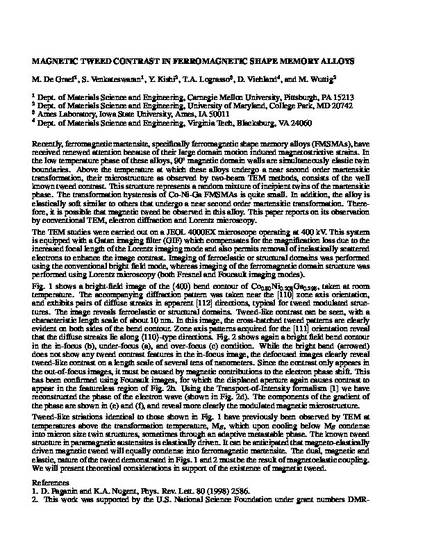
Recently, ferromagnetic martensite, specifically ferromagnetic shape memory alloys (FMSMAs), have received renewed attention because of their large domain motion induced magnetostrictive strains. In the low temperature phase of these alloys, 90◦ magnetic domain walls are simultaneously elastic twin boundaries. Above the temperature at which these alloys undergo a near second order martensitic transformation, their microstructure as observed by two-beam TEM methods, consists of the well known tweed contrast. This structure represents a random mixture of incipient twins of the martensitic phase. The transformation hysteresis of Co-Ni-Ga FMSMAs is quite small. In addition, the alloy is elastically soft similar to others that undergo a near second order martensitic transformation. Therefore, it is possible that magnetic tweed be observed in this alloy. This paper reports on its observation by conventional TEM, electron diffraction and Lorentz microscopy.
Available at: http://works.bepress.com/thomas_lograsso/173/

This article is from Microscopy and Microanalysis 9 (2003): pp. 584—585, doi:10.1017/S143192760344292X